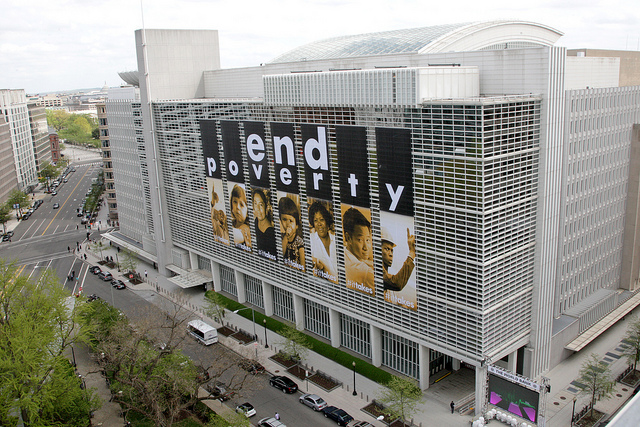Lant Pritchett has done it again.
In his most recent essay, “Can Rich Countries be Reliable Partners for National Development?” Lant brilliantly deconstructs the existential crisis that faces traditional development agencies. The paper is a “must-read-now” for those who work in or around any bilateral agency or multilateral development bank because it lays bare the fundamental disconnect between the current missions of major development institutions and the actual wants and needs of both citizens in developing countries and their governments.
Lant writes:
“Across the board, rich countries are backing away from the national development goals of poor countries, such as broad-based prosperity and effective government . . . towards a narrow agenda of low-bar goals, such as reducing ‘dollar-a-day’ poverty; ‘completing primary schooling’ (with no mention of quality of learning or education beyond primary); accessing basic water and sanitation; or focusing less on health and more on specific diseases.”
Several forces are pushing development agencies in this direction. Developing countries have alternatives to aid, particularly with resources from their own economic growth. And aid supporters in rich countries are increasingly “post-materialist,” which creates a divergence between what they want to provide and what people in developing countries want.
Lant’s analysis helps explain the poor track record of attempts to promote “country ownership.” To date, no development agency—with the possible exception of the U.S. Millennium Challenge Corporation—has done even a C+ job of aligning agency priorities with those established within partner countries, or using development dollars to strengthen in-country institutions and markets. Rich-country taxpayers who support aid tend to want faster progress toward pro-poor health, education and other social outcomes rather than economic growth alone. Even more daunting for the “country ownership” agenda is the awkward reality that shifting the locus of power to the national level wins few friends on the home front, particularly among those who are losing out on potential revenues from the business of aid.
Lant’s essay lays out a conundrum that seems irreconcilable. Given their constituencies, aid agencies cannot finance the things that address economic development writ large – such as energy projects, infrastructure, urban construction, universities, and transportation. So what’s a development agency to do?
The answer, I think, also comes from Lant—but from earlier times.
In 1999, Lant and his colleague Deon Fillmer figured out a way to take household survey data, like the Demographic and Health Survey, and estimate a robust wealth index so that we could compare and contrast the experiences of the wealthiest with the poorest households. Their paper, “Estimating Wealth Effects without Expenditure Data—or Tears: An Application to Educational Enrollments in States of India,” led directly to an explosion of analyses of equity in health, education, family planning, and other service utilization. For the first time, we could see, across dozens of countries, that progress was extraordinarily uneven, and that the benefits of spending on supposedly “pro-poor” interventions like childhood immunization were largely captured by better-off families. We had a new and crucially important way to assess the performance of a wide spectrum of government and donor programs, and to improve their design. Information and analysis shed new light, and continues to do so to this day.
Then, in 2002, Lant wrote “It Pays to be Ignorant: A Simple Political Economy of Rigorous Program Evaluation.” In it, he explained—using equations!—why and how individual development agencies and governments are unlikely to invest in learning from experience, even though it would permit them to optimize the impact of their spending. That was one of several seminal contributions that led to the movement for more and better evaluation through collective action.
And in 2004, Lant and his colleague Michael Woolcock wrote in “Solutions when the Solution is the Problem: Arraying the Disarray in Development” about intrinsic limitations of development interventions that are based on a technocratic analysis of “need:” When the problem is defined from 30,000 feet as a need for more clean water, for example, the solution starts with pipes and flow rates. If the people actually affected, within a local context, were given the opportunity to define a problem for themselves, and propose its solution, chances are they would pursue a path far different from both the technocrats and from people in other communities. It’s a complex paper, but at least one of its core messages is that information about people’s views, preferences, and experiences must be taken into account—and given real weight alongside external technical expertise.
These ideas can help development agencies escape their conundrum. Aid may be unable to finance the hydroelectric dams that countries want, but they can finance the information, research, piloting, and adaptation that make a difference in the ultimate success or failure of governments’ own investments. What Lant’s work has demonstrated over many years is the crucial role that information, analysis, and evaluation can play in shaping better outcomes for real people in real places. As I argued in an earlier blog post, aid agencies—particularly if they are willing and able to work collectively—have a comparative advantage in investing in gathering and revealing facts on the ground. Part of that agenda is pure data, part is research, part is evaluation and other forms of feedback. But it’s all important, and it’s all a big part of what needs to happen next if development aid agencies are ever to find the sweet spot between what they should do and what they can do.

